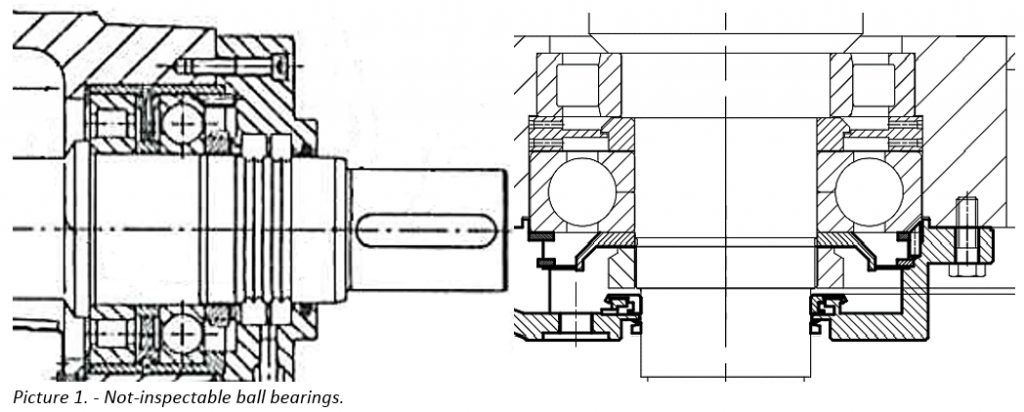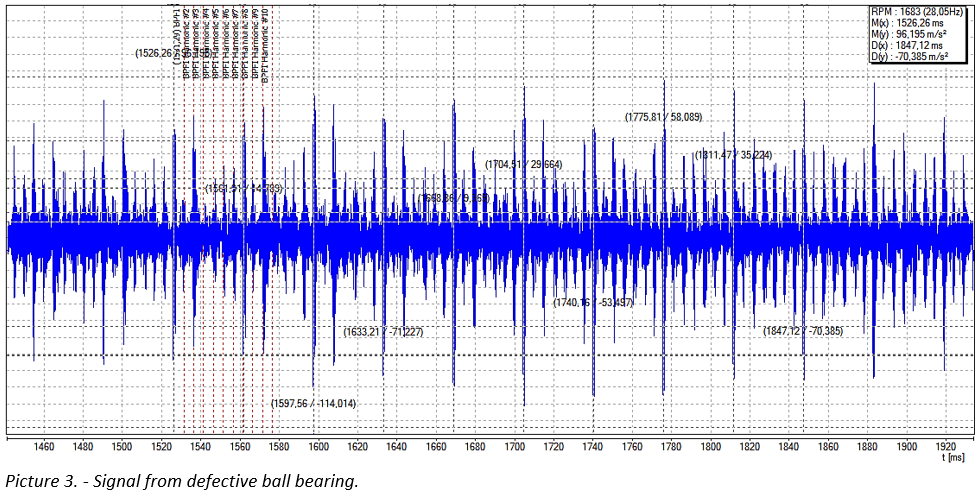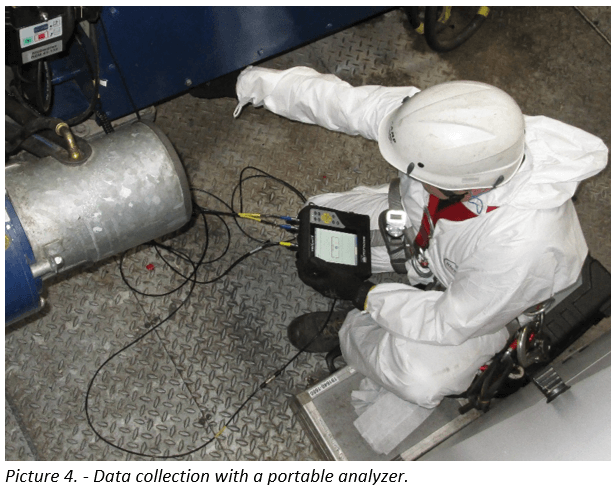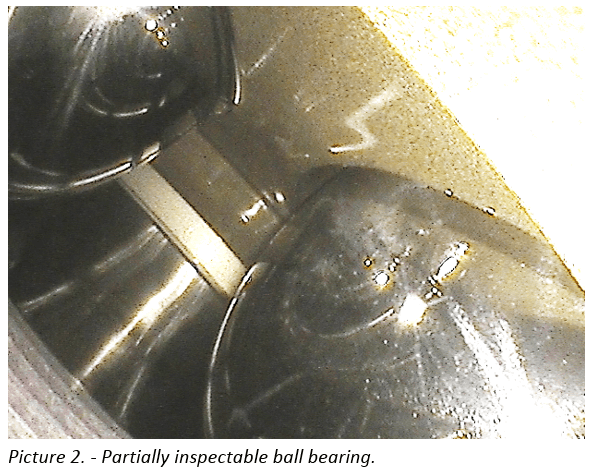Sometimes bearings in wind-turbine gearboxes are not reachable with an endoscope probe. This is a common issue for specific gearbox models, where several bearings are partially or completely non-inspectable. It is caused by either the tight construction of the bearing itself or shaft elements, such as oil deflectors, which impede the access.
But how does an operator properly assess the condition of non-inspectable bearings? Moventas, which provides service in condition monitoring and diagnosis of the main components of wind turbines, has put together a case study to shed some light on the problem and provide some tips.
 In the case study, Moventas looked at two examples of non-inspectable ball bearings. In the first example, the bearings are physically inaccessible and inspection is impossible.
In the case study, Moventas looked at two examples of non-inspectable ball bearings. In the first example, the bearings are physically inaccessible and inspection is impossible.
In the second example, the ball bearing is partially inspectable but only the generator side’s half inner race is visible. The image below shows that the bearing is in good condition. Time was spent for this bearing inspection, but it was not possible to detect any significant defect on the visible portion of the inner race. The outer race was not reachable with endoscope probe because of the tight bearing construction.
Vibration analysis is always a challenge when performed on wind gear units but, if performed by specialists, it can supply excellent information about bearings’ condition.
The analyses must have three main goals:
- Bearing defect detection
- Defect severity assessment
- Corrective action recommendation
The demodulation techniques allow even non-advanced analyses to detect bearing defects, especially on high speed bearings. Vibration analysis can supply good information about defect severity, too. The severity assessment is usually the most complicate task in the analyses, and a specialist is needed for that.
Only a specialist can clearly define the severity of a fault condition and suggest a proper timing for the corrective action. A vibration analysis performed on the gearbox (where the partially inspectable bearing in Picture 2 was taken), revealed a ball bearing defect with critical severity.

Vibration analysis on turbine drivetrain
Along with the endoscopic inspection, given suitable wind conditions, it is possible to perform vibration measuring with a portable analyzer. However, it is better to do so with a multi-channel one to reduce the turbine run time. Several sensors with magnetic support are then moved point to point to collect data on key measurement locations of all the drivetrain components.
 This way it is possible to collect additional information from the rotating equipment, but with some disadvantages:
This way it is possible to collect additional information from the rotating equipment, but with some disadvantages:
- Personnel must stay in the nacelle during 30-minute turbine run
- It is possible to obtain a quick view of the vibrational behavior of the entire drivetrain, with no chance to analyze trends or data collected in different operating conditions
- Data analysis is performed later in the office, with no possibility to implement the acquisition with further data in case it is needed.
If a defect is detected on a bearing at an early stage while using a portable device, it is important to monitor the defect’s progression. This means maintenance personnel should climb the turbine periodically to collect additional data on the drivetrain, on the base of the recommended frequency.
Read the full case study here.
Filed Under: Bearings, News

 But that brings us back to the inspection process: How can one assess the condition of non-inspectable bearings?
But that brings us back to the inspection process: How can one assess the condition of non-inspectable bearings?


